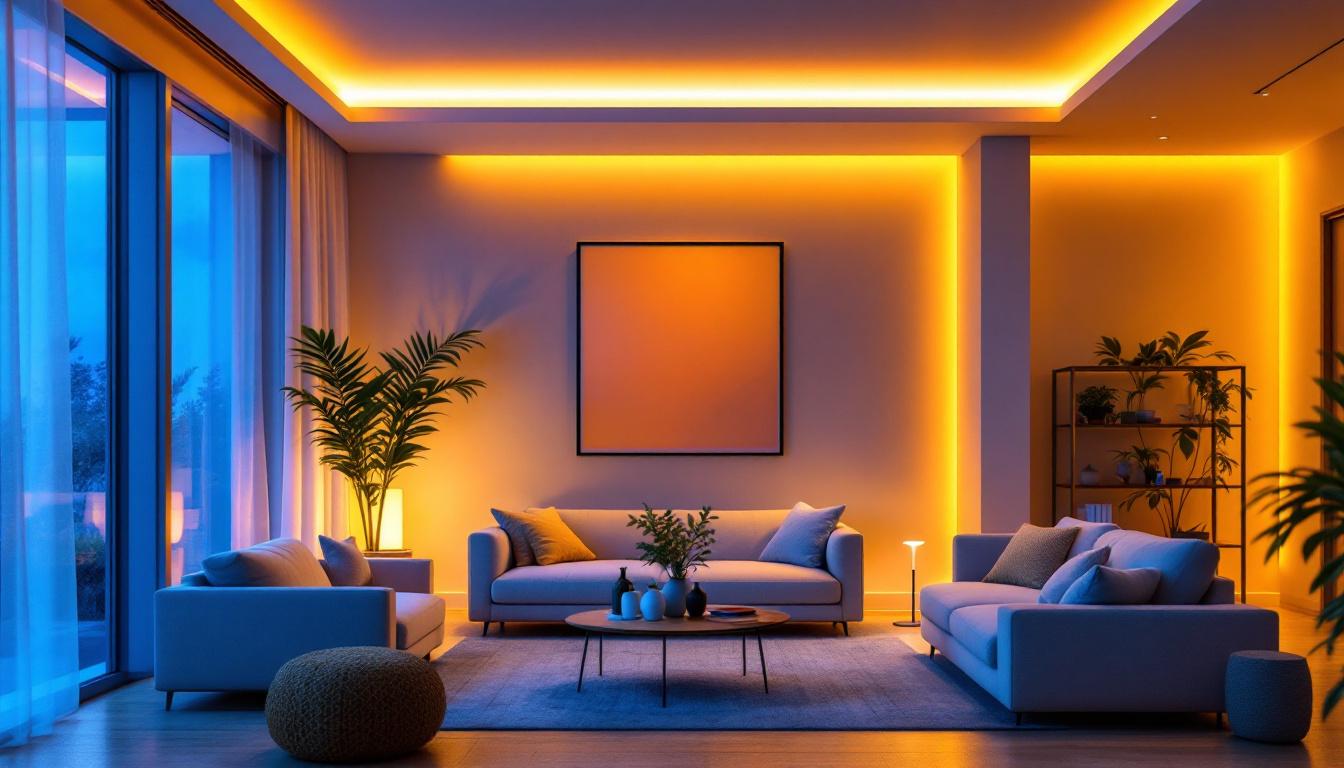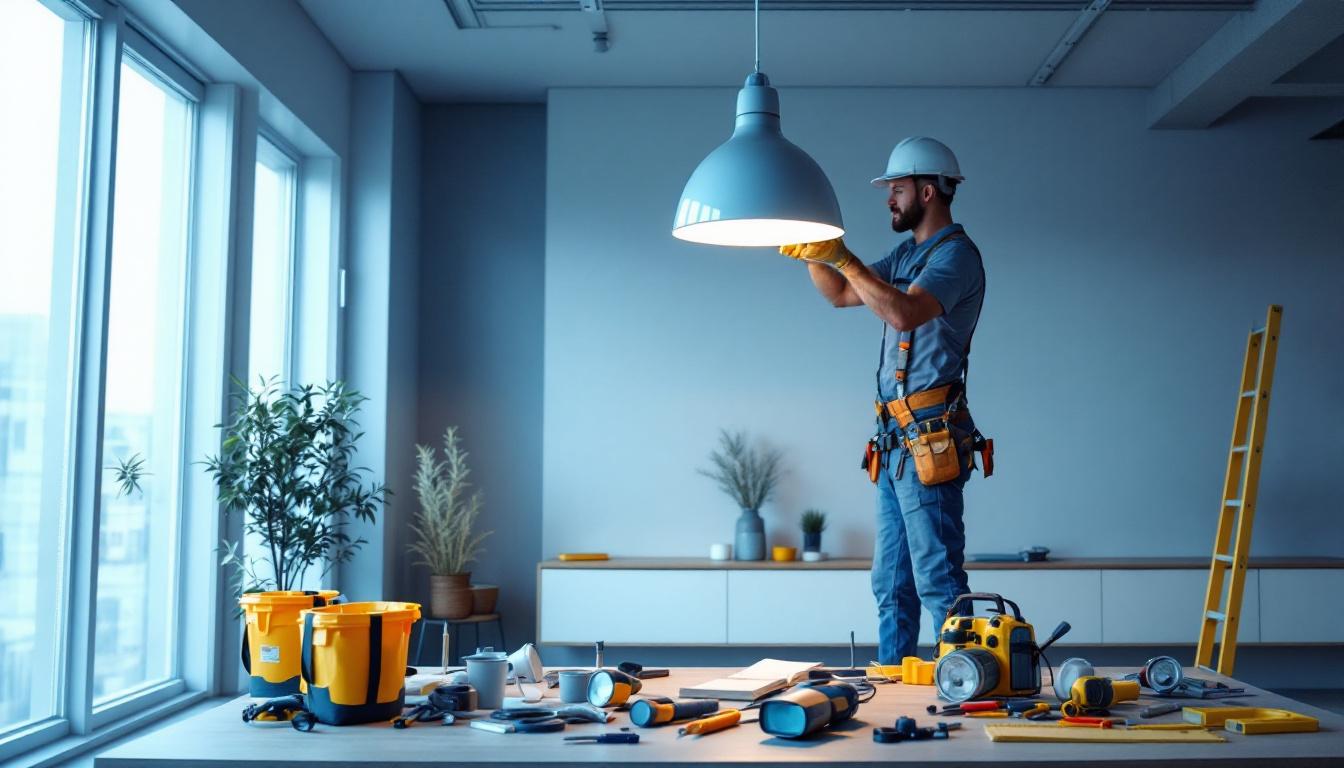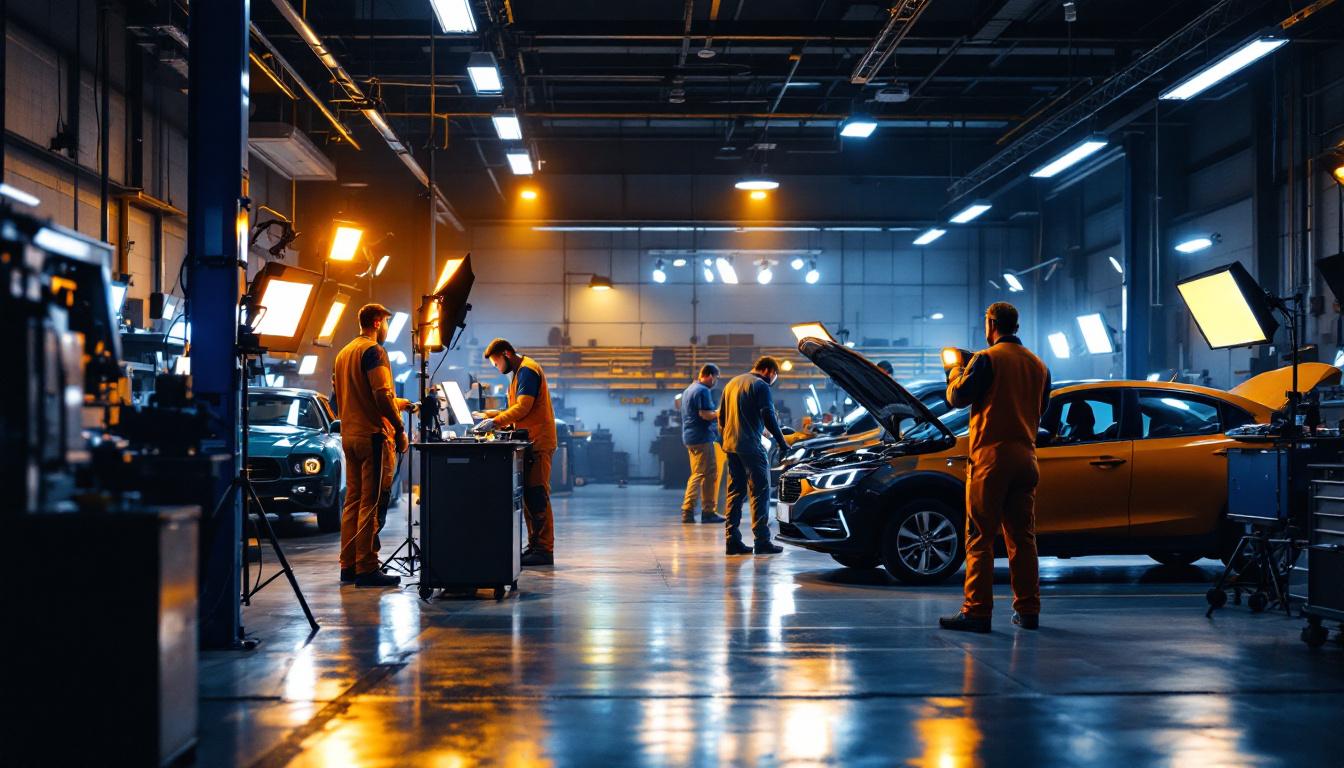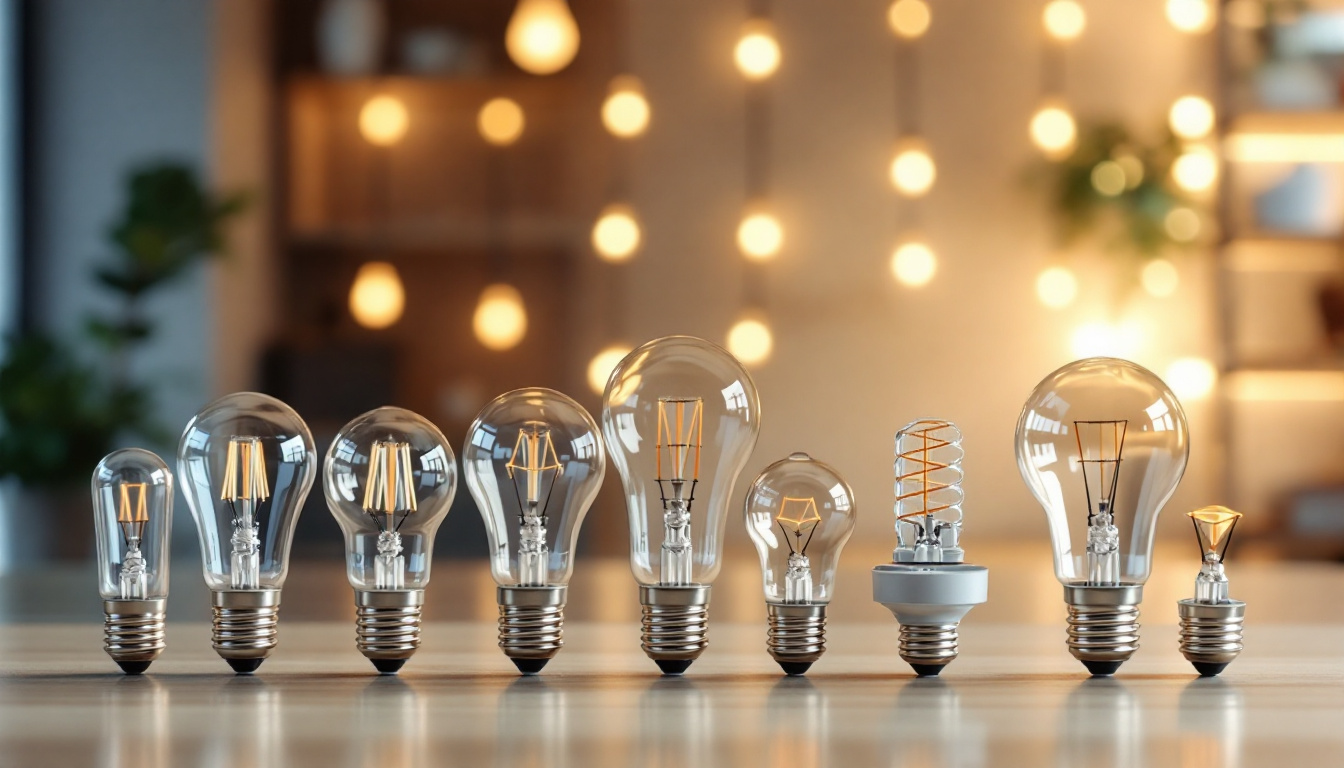
The evolution of lighting technology has brought significant advancements, particularly in the transition from traditional fluorescent light bulbs to LED alternatives. This shift is not merely a trend; it represents a fundamental change in how light is produced, consumed, and perceived in various environments. For lighting contractors, understanding this transition is essential for delivering optimal lighting solutions to clients.
Fluorescent bulbs have long been a staple in commercial and residential lighting due to their efficiency and longevity. However, as LED technology has matured, it has become increasingly clear that LED replacements offer numerous advantages. These benefits include energy efficiency, reduced heat output, and longer lifespans, making LEDs an attractive option for modern lighting designs.
LEDs, or Light Emitting Diodes, are known for their remarkable energy efficiency. They consume significantly less power than fluorescent bulbs while providing the same or even superior light output. This efficiency translates into lower energy bills for clients and a reduced carbon footprint, aligning with the growing demand for sustainable practices in lighting design.
Another compelling advantage of LED technology is its longevity. While fluorescent bulbs typically last around 7,000 to 15,000 hours, LED bulbs can last up to 50,000 hours or more. This extended lifespan reduces the frequency of replacements, which is particularly beneficial in commercial settings where maintenance costs can add up over time. Furthermore, the durability of LEDs means they are less prone to breakage, which is an essential factor in high-traffic areas or installations that are difficult to access.
Beyond energy savings and longevity, LED lighting offers enhanced quality. The color rendering index (CRI) of LED bulbs is often superior to that of fluorescent bulbs, resulting in more vibrant and accurate color representation. This is especially important in environments such as retail spaces, art galleries, and design studios, where the perception of color can significantly impact customer experience and satisfaction.
Furthermore, LED technology allows for greater flexibility in lighting design. With options for dimming, color temperature adjustments, and various fixture styles, contractors can create customized lighting solutions that meet the specific needs of their clients. This adaptability is a key selling point when discussing LED replacements with potential customers. Additionally, the ability to integrate smart technology with LED systems opens up new avenues for automation and control, allowing users to adjust their lighting settings remotely or program them to change throughout the day, enhancing both convenience and energy savings.
Moreover, the environmental impact of transitioning to LED cannot be overlooked. Unlike fluorescent bulbs, which contain hazardous materials like mercury, LEDs are free from such toxic substances, making them a safer choice for both consumers and the environment. This eco-friendly aspect resonates well with clients who are increasingly conscious of their environmental footprint and looking for ways to reduce waste. As cities and municipalities push for greener initiatives, the adoption of LED lighting aligns perfectly with these goals, making it not just a smart financial decision, but also a socially responsible one.
While the benefits of LED lighting are substantial, transitioning from fluorescent to LED is not without its challenges. Lighting contractors must be prepared to address these issues to ensure a smooth conversion process for their clients.
One of the primary concerns for clients considering LED replacements is the initial cost. Although LED bulbs are more expensive upfront compared to fluorescent options, it is crucial to emphasize the long-term savings associated with energy efficiency and reduced maintenance. Providing a cost-benefit analysis can help clients understand the return on investment over time.
Additionally, contractors should be aware of available rebates and incentives that can offset the initial costs. Many utility companies offer programs to encourage the adoption of energy-efficient lighting solutions, which can make the transition more financially feasible for clients. By staying informed about these programs, contractors can guide their clients through the application process, ensuring they take full advantage of financial support that can significantly reduce the overall expenditure.
Another challenge that may arise during the transition is compatibility with existing fixtures and ballasts. Not all fluorescent fixtures are designed to accommodate LED replacements directly. In some cases, modifications may be necessary, which can lead to additional costs and labor. Contractors should assess the existing lighting infrastructure and provide recommendations for compatible LED options or necessary upgrades.
In addition, it’s essential to educate clients about the potential need for new dimmers or controls that are compatible with LED technology. This proactive approach can help avoid surprises during installation and ensure that clients are fully informed about the process. Furthermore, understanding the differences in light quality and color temperature between fluorescent and LED can also aid in making informed decisions. Clients may have specific preferences for the ambiance in their spaces, and discussing these aspects can lead to a more satisfactory outcome. By offering a comprehensive overview of both technical and aesthetic considerations, contractors can foster trust and confidence in their expertise, ultimately enhancing the client experience during this important transition.
When replacing fluorescent bulbs with LEDs, lighting design considerations become paramount. The goal is to create a cohesive and aesthetically pleasing environment while maximizing the benefits of LED technology.
Color temperature plays a crucial role in the overall ambiance of a space. LED bulbs are available in a range of color temperatures, typically measured in Kelvin (K). Warmer tones (around 2700K to 3000K) create a cozy atmosphere, making them ideal for residential settings, while cooler tones (4000K to 5000K) are often preferred in commercial environments where clarity and focus are essential.
Contractors should work closely with clients to determine the desired mood and functionality of each space. For instance, a restaurant may benefit from warm lighting to enhance the dining experience, while an office may require cooler lighting to promote productivity. Understanding these nuances is key to successful lighting design.
Incorporating dimming and control systems can significantly enhance the versatility of LED lighting designs. These systems allow users to adjust brightness levels according to specific needs and preferences, contributing to energy savings and improved user experience.
Contractors should consider recommending smart lighting solutions that enable remote control and automation. This technology offers clients the ability to customize their lighting environments easily, adapting to different activities or times of day. Such features not only add convenience but also align with modern trends in home and commercial automation.
Examining real-world examples of successful LED replacements can provide valuable insights and inspiration for lighting contractors. These case studies demonstrate the transformative potential of LED technology in various settings.
In a recent project, a clothing retailer transitioned from fluorescent to LED lighting throughout their store. The result was a significant improvement in both energy efficiency and customer experience. The enhanced color rendering of the LED bulbs made the clothing appear more vibrant, attracting more customers and boosting sales.
Additionally, the retailer implemented a smart dimming system that allowed them to adjust lighting levels based on the time of day and foot traffic. This flexibility not only reduced energy consumption but also created a more inviting atmosphere during peak shopping hours.
Another compelling case involved an office building that replaced its outdated fluorescent lighting with LED fixtures. The new lighting design prioritized employee well-being and productivity. By selecting a cooler color temperature and incorporating task lighting, the office environment became brighter and more conducive to focused work.
Feedback from employees was overwhelmingly positive, with many reporting increased comfort and satisfaction. The organization also benefited from reduced energy costs, showcasing the financial advantages of investing in LED technology.
The landscape of LED lighting continues to evolve, with new technologies and trends emerging regularly. Staying informed about these developments is essential for lighting contractors looking to remain competitive in the industry.
As smart home technology becomes more prevalent, the integration of LED lighting with smart systems is expected to grow. This trend allows for greater control over lighting environments, enabling users to create personalized experiences tailored to their preferences.
Contractors should familiarize themselves with the various smart lighting solutions available on the market. This knowledge will empower them to offer clients cutting-edge options that enhance convenience and energy efficiency.
Another exciting trend is the advancement of color-tuning technology in LED lighting. This innovation allows users to adjust not only brightness but also color temperature throughout the day, mimicking natural light patterns. Such capabilities can have positive effects on mood and productivity, making them particularly appealing for workplaces and educational environments.
By staying ahead of these trends, lighting contractors can position themselves as leaders in the industry, providing clients with the most innovative and effective lighting solutions available.
The transition from fluorescent light bulbs to LED replacements represents a significant opportunity for lighting contractors to enhance their offerings and meet the evolving needs of clients. By understanding the benefits, challenges, and design considerations associated with LED technology, contractors can create lighting solutions that not only improve efficiency but also elevate the quality of light in any space.
As the industry continues to evolve, embracing advancements such as smart technology and color tuning will be crucial for staying competitive. By prioritizing education and innovation, lighting contractors can position themselves as trusted partners in the journey toward better lighting designs, ultimately transforming the way light is experienced in both residential and commercial settings.
Ready to take the next step in lighting design and offer your clients the best in LED technology? At LumenWholesale, we provide lighting contractors with the highest quality, spec-grade LED products at unbeatable wholesale prices. Say goodbye to local distributor markups and hello to a vast selection of reliable lighting that meets the highest industry standards. With free shipping on bulk orders, you can ensure your projects shine brighter while keeping costs down. Elevate your lighting solutions today and discover the best value in wholesale lighting with LumenWholesale.

Discover strategies to boost your business with our comprehensive guide on lighting deals.

Discover the must-have tools and techniques for lighting contractors to master the art of floating ceiling lighting.

Discover why auto shop lights are indispensable tools for lighting contractors.

Explore the essential role of light bulb bases in modern lighting solutions.